Several months ago I wrote a piece on my newly acquired Nikon Df. The piece was OK, but I’ve thought since then that I didn’t really do the camera justice. My thoughts on the camera continue to evolve, as does the way I use it. But I guess what interests me most is how I can use this camera – or any camera of course – to get the look I’m after. It’s very personal.
To me the way that a sensor plays with a lens is key to image quality, and the reason I bought the Df in the first place was that I wanted to pair its sensor with 50mm Nikkor lenses because that focal length is really all I have shot in my film Nikons for the past five years when I started shooting film again.
I wanted to experiment with what the Df sensor would give me compared with what film would give me. I guess I’ll keep saying, “this is very personal” a lot, but if I’m shooting a Df with a 50mm on the front then the whole experience is very similar to film except for the means of capture – ie digital sensor or film. It’s worth mentioning speed/ISO here: as we know, digital can shoot at way higher ISOs than we get with film, which makes it much easier in many situations, but if we’re comparing digital with film then I think it’s important to use the same ISOs for each. This way you get the same issues of shutter speed, apertures, motion blur etc with each. One nice thing about the Df/D4 sensor is that the base ISO is 100, so I can pretend I’m shooting Sensia 100 or Portra 160 without dipping below base.

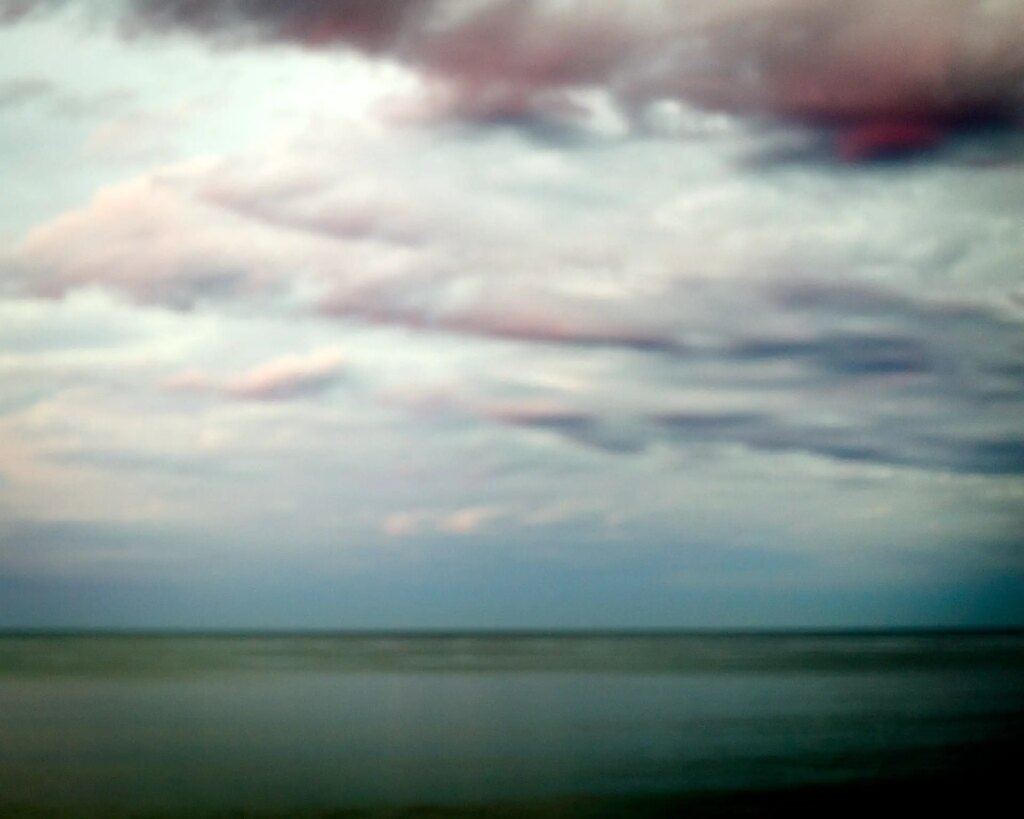
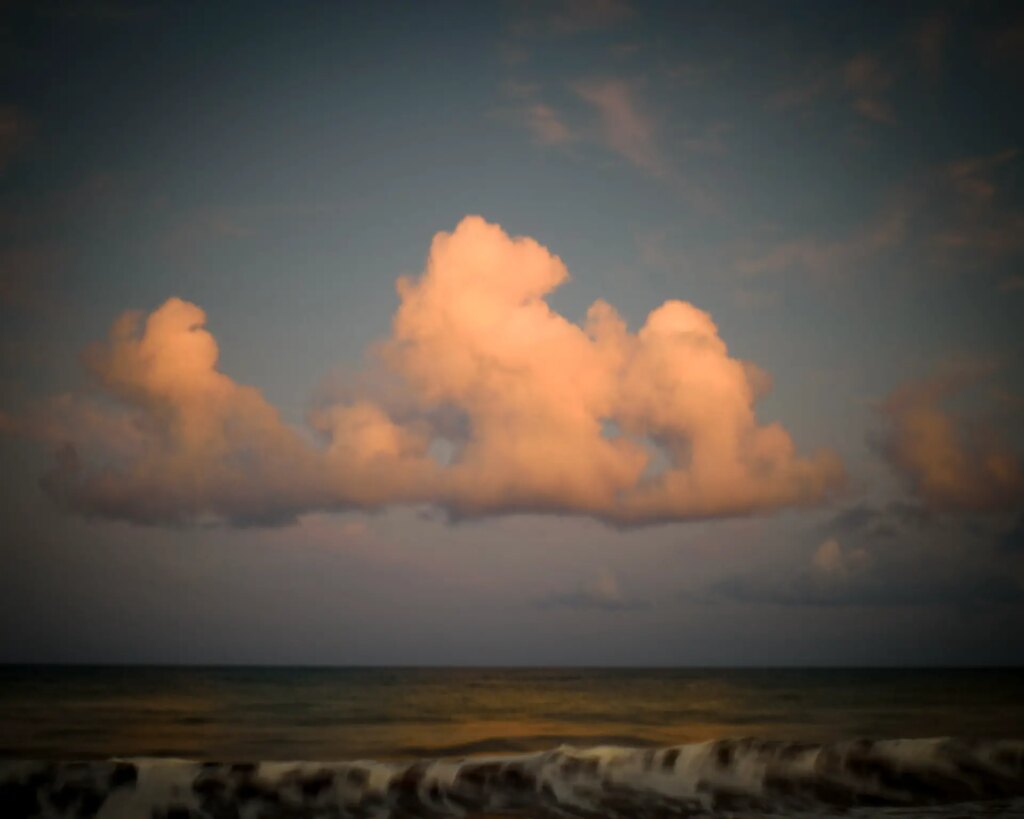
It’s easy to get hung up on shooting charts and brick walls, and I guess one thing I would say, is when you analyse your own shots and the shots of others consider how much the lens character plays a part. Sometimes it will, but apart from the big things like is it wide or tele, I’d say way more often the lens character not really a determining factor. I mean, to take an extreme example, suppose you sold a kidney and bought a Leica Noctilux and when people saw your shots they went; “Wow! Shot on a Noctilux!” I think I’d feel if that’s the FIRST thing they noticed then maybe I should have made a shot that was a bit more interesting.
A while ago I went as far as setting up a test scene and shooting it on a few different Nikkor 50s. I satisfied myself that:
a) at f1.4 they were a bit soft and less contrasty, and
b) any 50mm shot at f2 was okay.
That’s essentially it. This whole piece really says just that in a very long-winded form.
The corollary to that is to pick a lens that you like using; whose ergonomics allow you to get the shot you want. Different lenses will help you in different ways, but in the case of the Nikkor 50s the differences are in weight, size and ergonomics – not so much in optics.
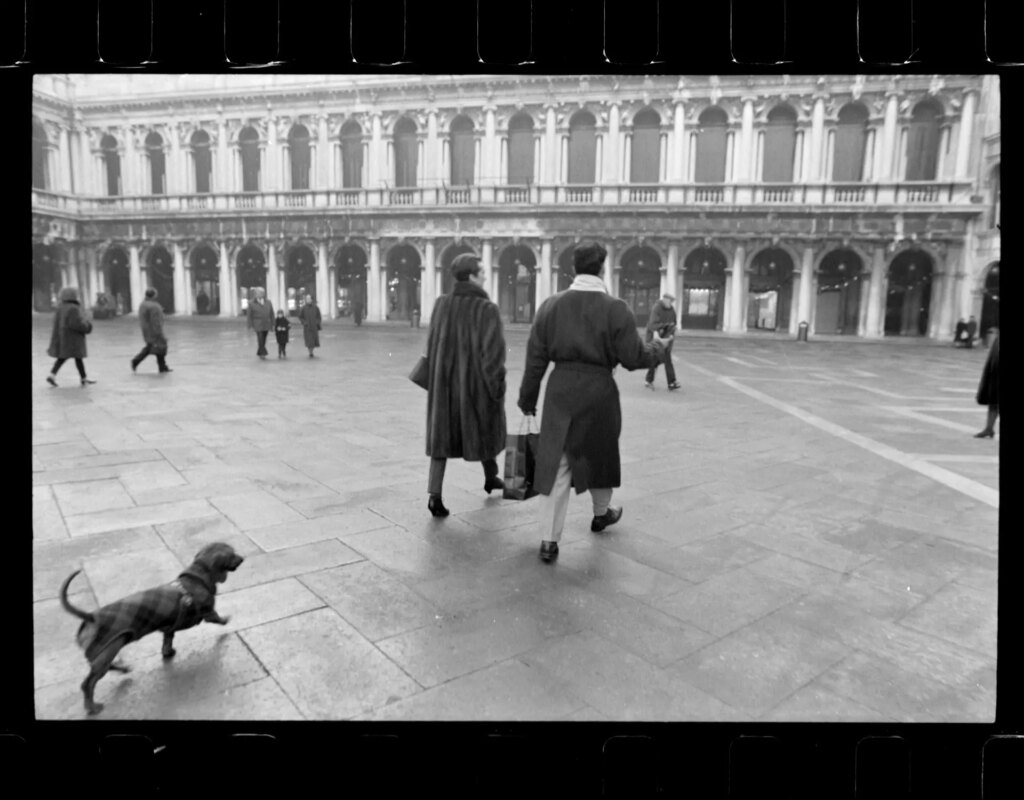
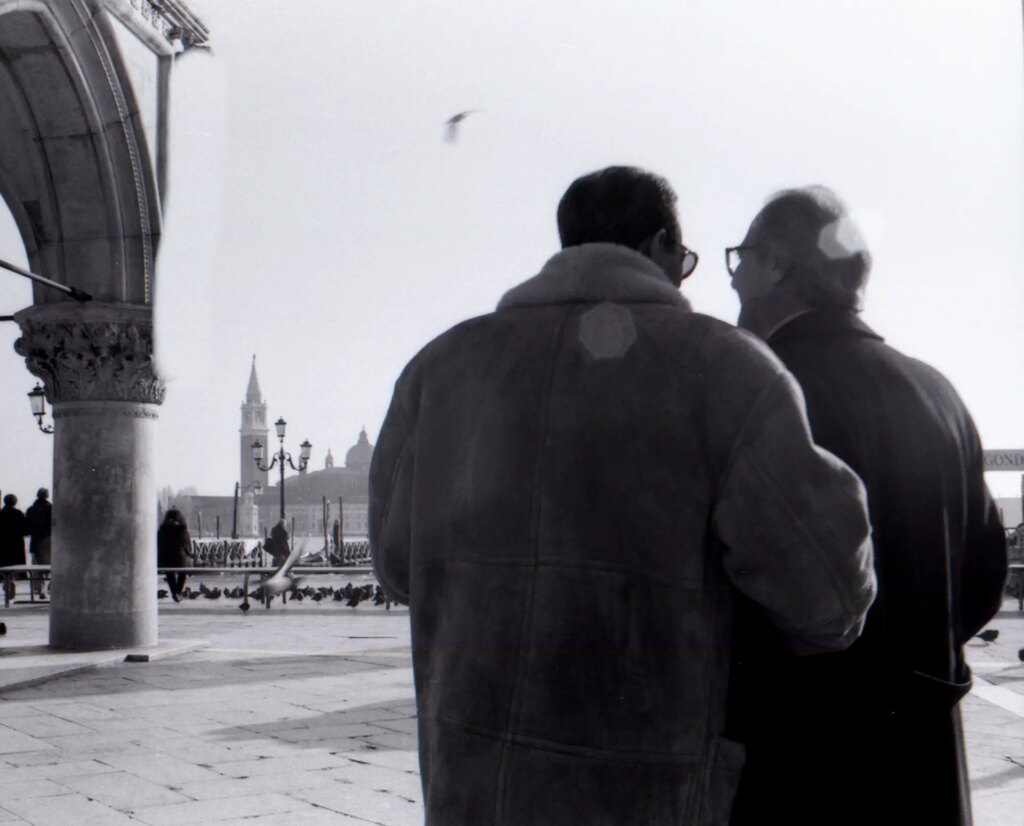
BUT: I thought to myself that I can’t really make such an assertion unless I’m prepared to back it up, so I set up another test scene and shot the whole lot again, both wide open and at f2. And guess what – I was really surprised at how close they all were. I’d forgotten about the vignetting at f1.4; that was massive, but again, all the 1.4s were about the same – a bit soft and less contrasty wide open, and at f2.0 all the lenses; the 1.4s, 1.8s and 2.0s were pretty equal.
As I’ve said, I’m finding that in 35mm film in an SLR I really have shot nothing but a 50mm lens for the last five years. I’ve shot various film compacts of course with their own lenses, and on my Fuji X-Pro3 I favour a 35 or 40mm equivalent to allow for more cropping, but that’s another story.
Anyway, I had been sitting on this idea for a while when a new comment on the old Df post appeared and spurred me into action. The comment went like this:
“I for one, would love to read your opinion of various Nikon 50s on the Df (and in general) I now find myself with quite the selection of Nikon 50 mils to choose from & while I agree they are “all good” I would really value some of your insights on your experience with them & comparisons when used on the different mediums.”
OK – Let’s go then.
It’s very personal
It’s already the third time in this piece I’ve said that… I think that anything is fine – if you want to take three zooms as a minimum on your hiking trip then go your hardest. It all depends on what you want. If you only ever use one lens that’s also perfectly fine. (Slight disclosure of bias – using only one lens is cooler.)
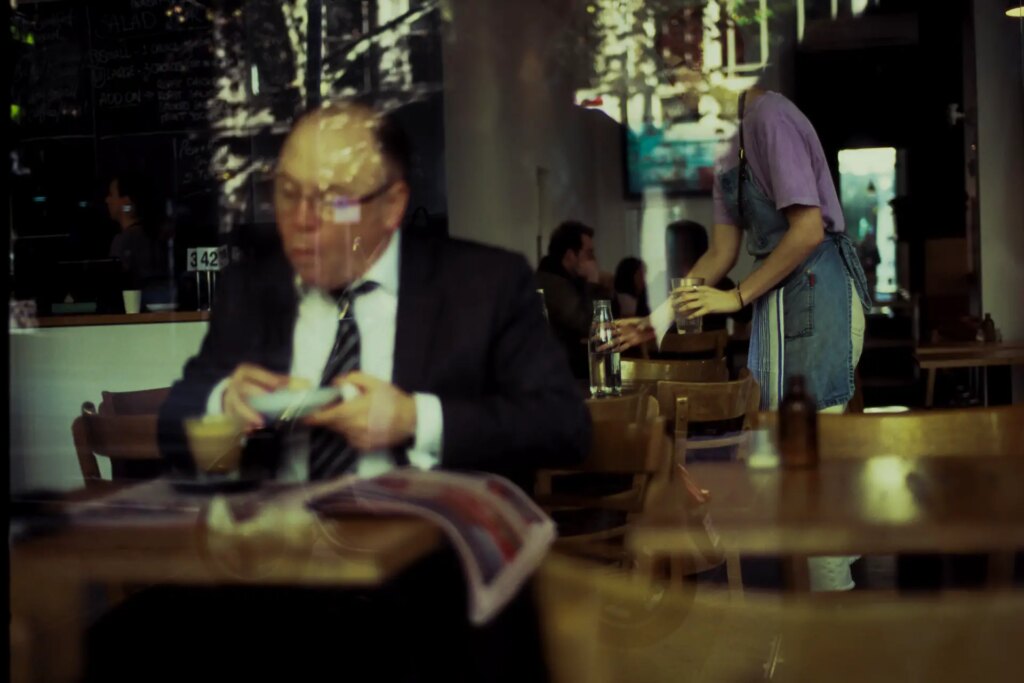
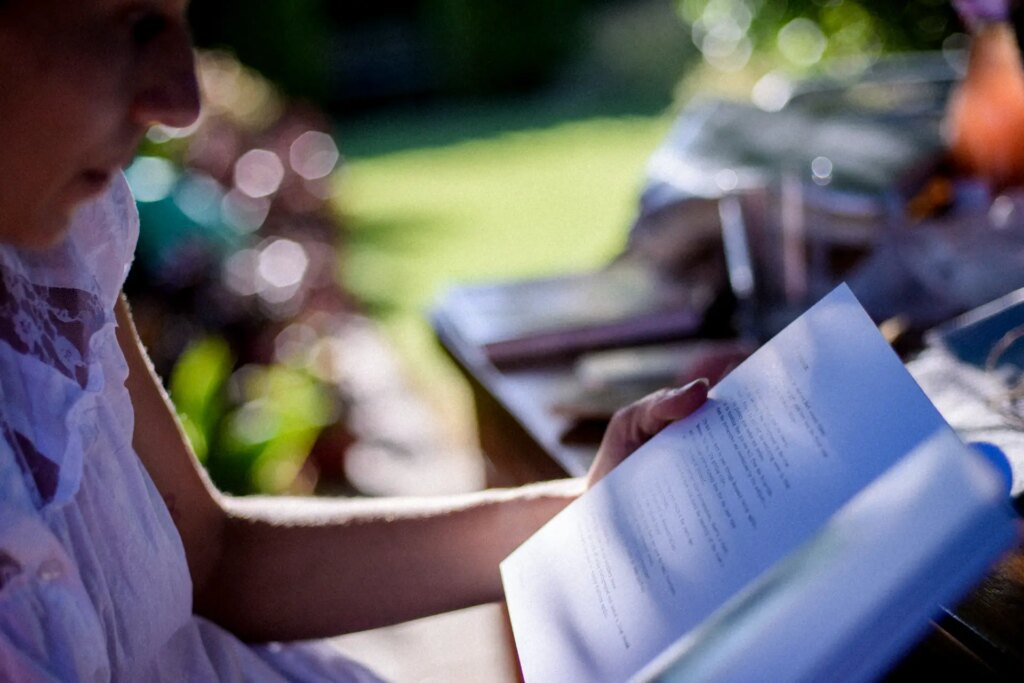
It depends what you shoot
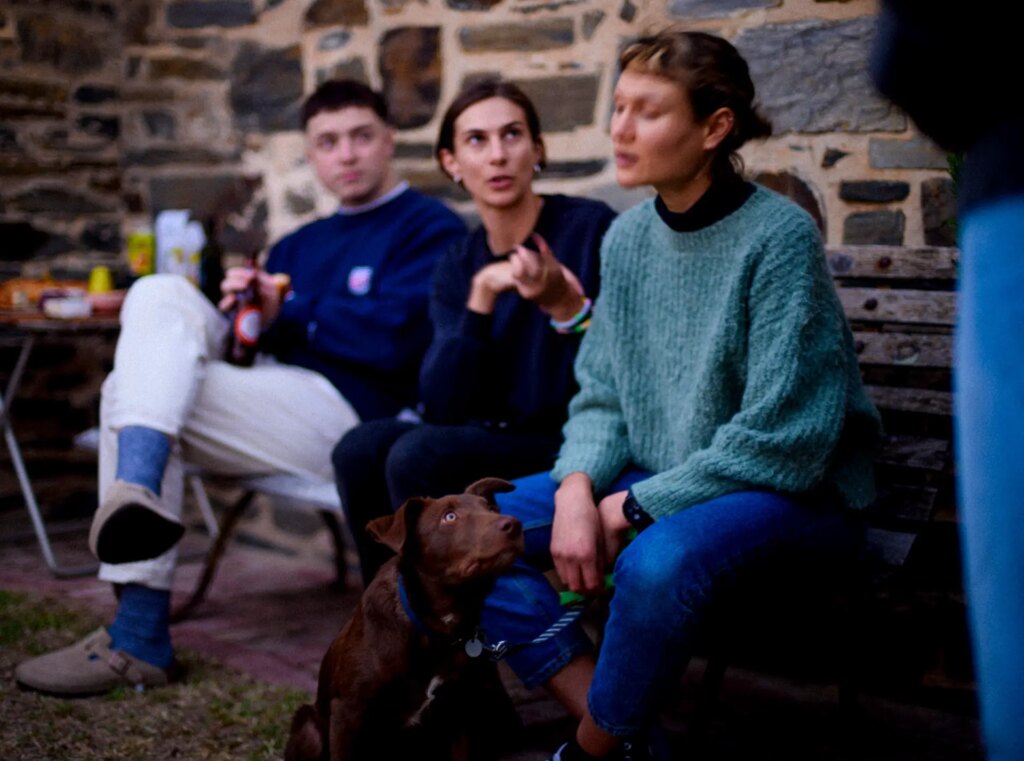
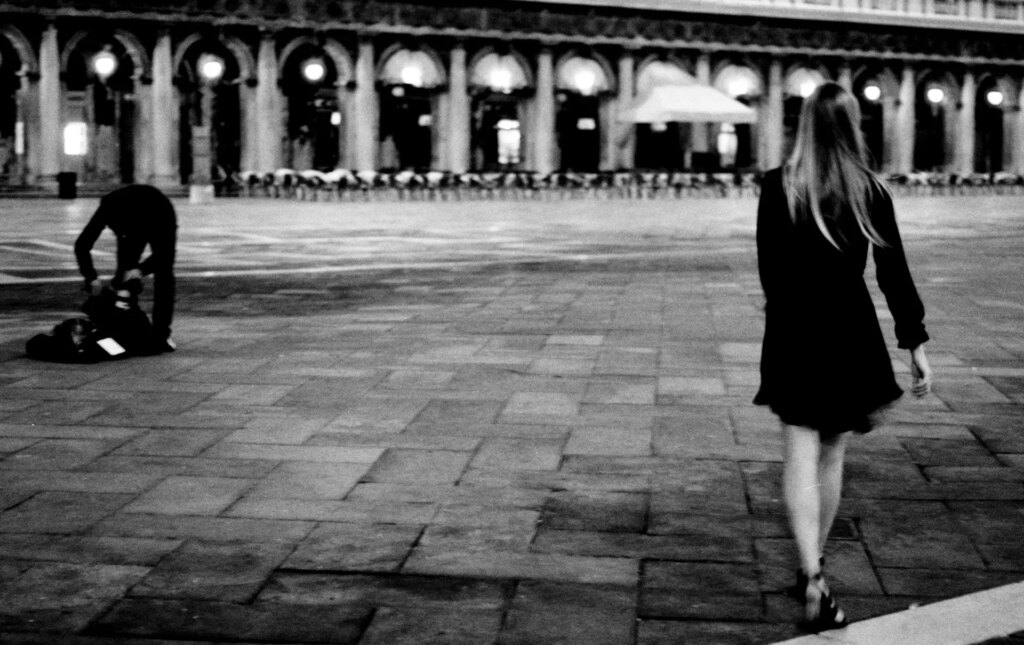
I know that fast 50s were around before the time of the SLR, but the lenses I’m interested in come in hand in hand with the rise of the 35mm SLR. It’s a news/reportage style of shooting: quick and immersive. It’s Swinging 60s British fashion. When Bailey famously first went to New York with the Shrimp to shoot a feature for Vogue in 1962 he shot much of it on 35mm and then duped it up onto 120 in order to satisfy the editors. “35mm is not lower quality,” he said later, “it’s a different quality.”
If I’m handholding a shot of clouds at f2 and 1 second, or San Marco in the dark at 1/4s then lens sharpness is the least of my concerns. Here the best lens is a manual focus with nice clear aperture clicks and a good hard stop at infinity. I’m often shooting when it’s too dark to read any of the numbers
Are aberrations good or bad?
I shot some of my paintings on a gallery wall recently and cursed every imperfection of the lens that I used. Why, on that day, had I not brought something decent with me? Well the reason for that was I was bored by the clinical sharpness of the XF 27mm f 2.8 I usually used on my Fuji and swapped it out for a cheap TT-Artisans with a bit more character. But of course character sucks if you’re doing reprographic work. I wasn’t expecting to do this reprographic stuff and I got caught out with the wrong gear. It’s a question of having the right lens for the type of picture you want to make. Personally I prefer a lack of linear distortions because I shoot a lot of horizons and I want them to stay straight lines.
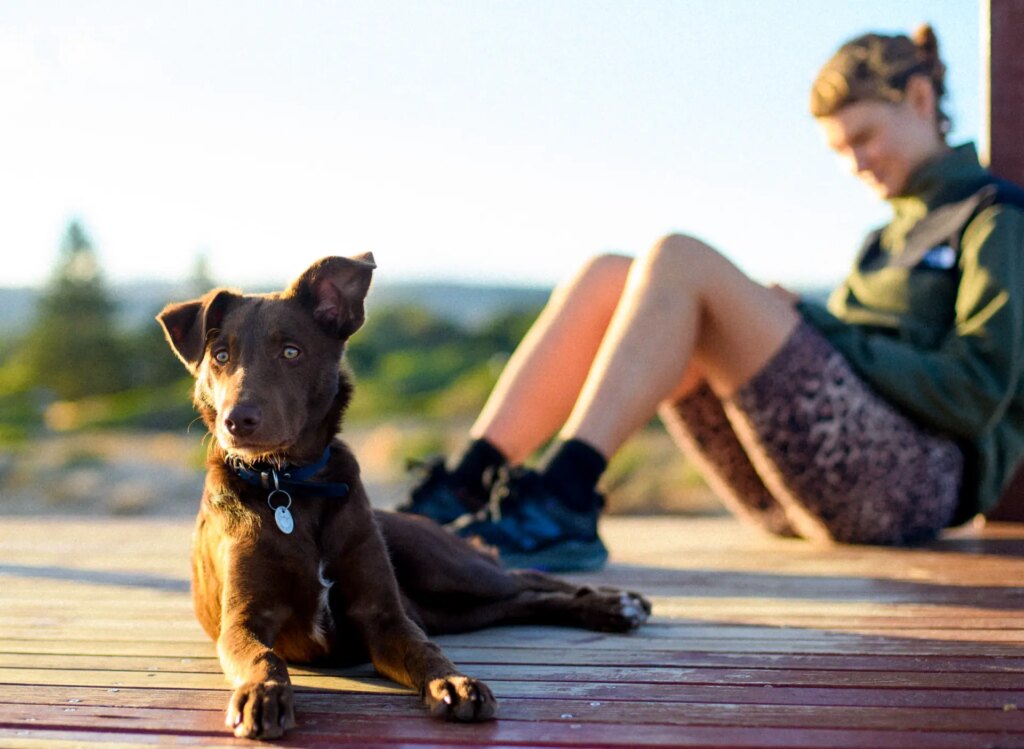
Sharpness is also about ergonomics
If you’re working handheld (and quickly) to get a shot, first you need to have it in focus if it’s going to be sharp, and the ergonomics of the camera, the quality of its viewfinder, its focusing screen and how that plays with the lens are all part of it. Let’s say you’re shooting 400 ASA and so that extra bit of speed to freeze the action can be useful and it might be more important than the softness that opening up an extra stop introduces into the lens. This is no longer the case with digital – we need to remember that an extra stop can be a big deal if you’re in low light shooting Ektachrome. With film you can’t just crank the ISO to decrease shutter speed.
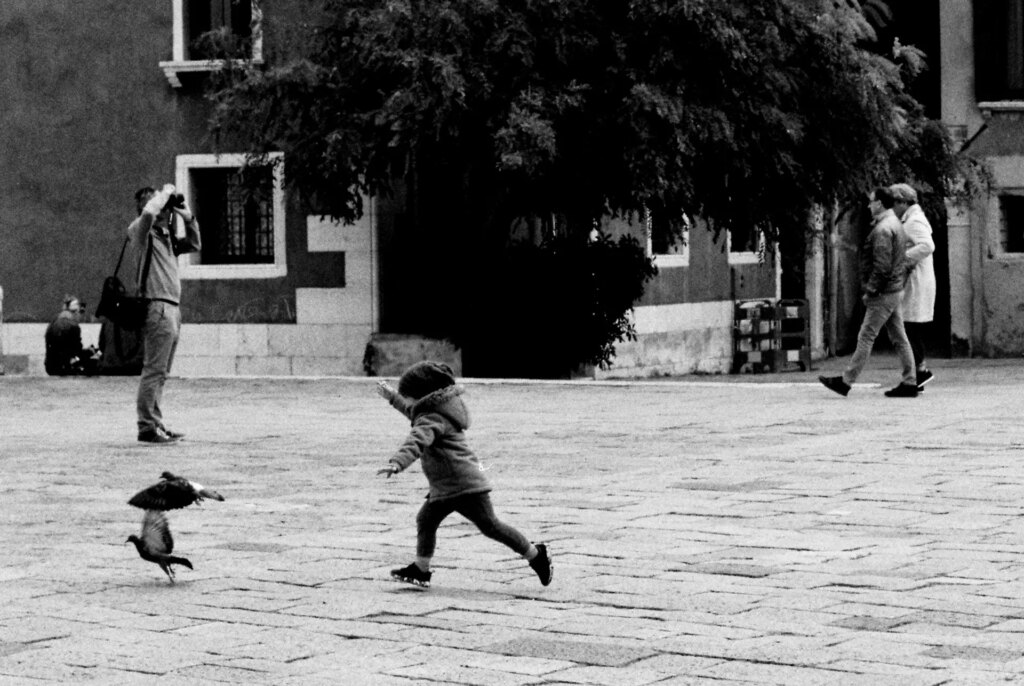
Focus throw matters
Well, it does for me. Some of these lenses I find really slow to focus because the throw from infinity to closest focus is too far. If I need two bites at it with the camera up to my eye it’s a real bummer. But when I actually measured it for this piece I found the differences in the lenses was much less than I had thought. The shortest was about 120 degrees (the pancake) and the longest about 190 (the f1.4 Ai) For some reason there was a point where it goes from feeling quick to feeling slow that is more than just a linear relationship to angle.
I think this will vary from person to person so I’ll not make too much of it except to say that I think it’s worth considering. It’s a case where you can’t just choose a lens based on specs; you need at the very least to have a play with it on a camera body.
It’s about style more than resolution
Let’s also be realistic that in 2020+ anyone who’s shooting 35mm film is doing so for the aesthetic and experience over ultimate resolution, or if they’re doing it commercially they’re doing it to differentiate themselves and their service by providing something that digital can’t. Let’s say you’re an Elopement Photographer (I only very recently found out that elopement photography is actually a thing) who shoots three kinds of film camera on a commercial shoot. It would be unkind to say this is done purely for the cool factor, and perhaps more accurate to say it’s done because it offers a unique aesthetic that cannot be matched by digital. The coda for this however is also that it’s cool. So let’s be frank here. Stylish gear is more fun than gear that looks boring. And I’m certainly not immune to this shallowness – I love a cool rig.
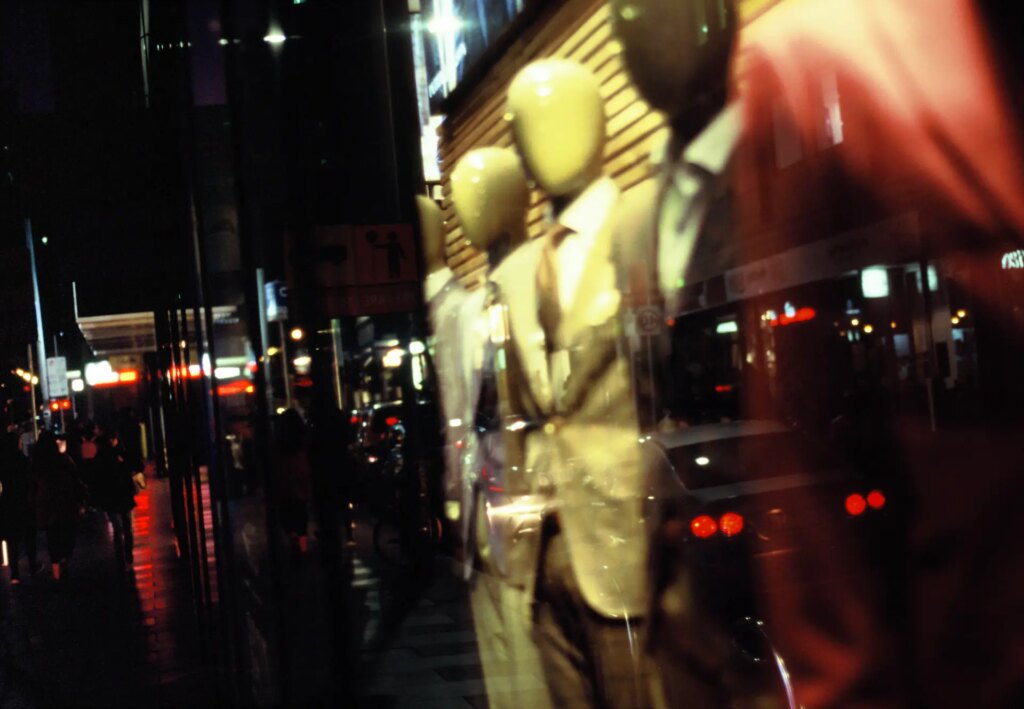
It’s an aesthetic of culture
I guess I’d say that in shooting an oldish 50mm f1.4 at f2 I’m looking for a certain aesthetic that resonates with early Linda Eastman, David Bailey et al. A certain gonzo roughness and imperfection that makes the photographer a part of the photograph. The photographer’s in there – being a participant, not standing back, not removed behind the screen of a view camera. So it’s a cultural aesthetic more than anything objective. I don’t know if it’s something that other people even would pick up on or if it’s something that I just do for fun. And this is the stuff that I’m just doing to amuse myself. Sure, I want a record of Christmases and the odd family get-together but this is not commercial stuff. I’m not trying to create a brand aesthetic here – I’m just playing around with certain style that I like.
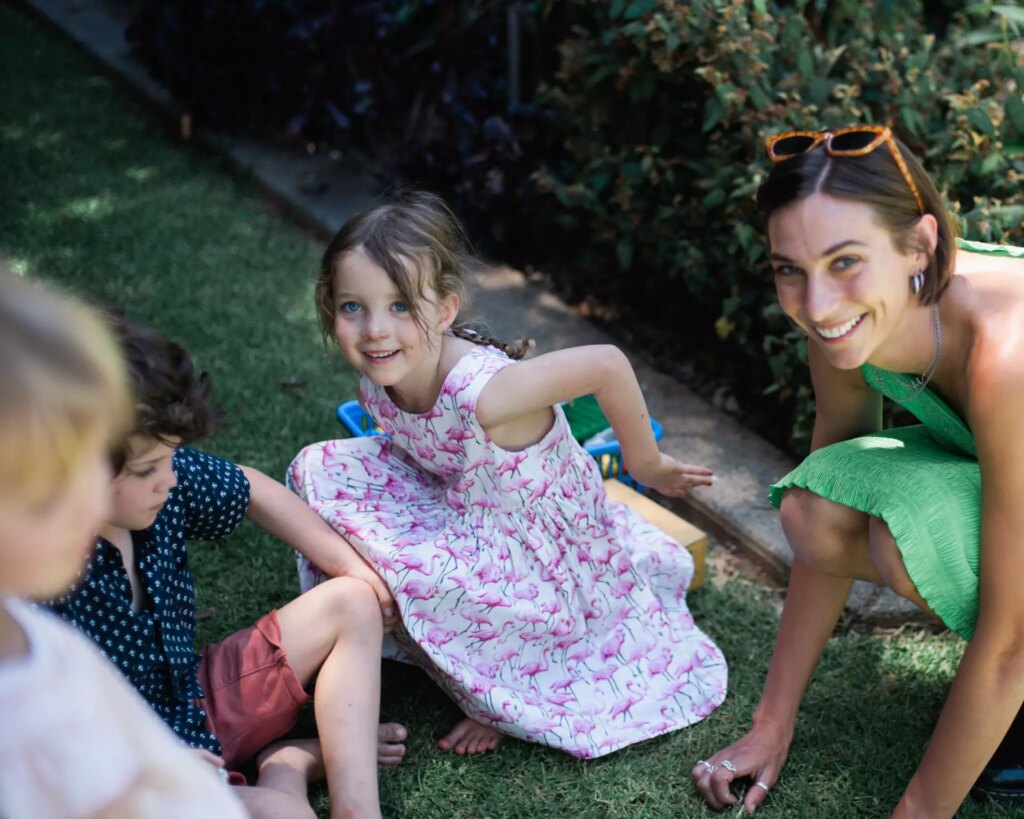
Let’s meet the Lenses
First – a nerdiness disclaimer. All my lenses had been AI converted before I got them or were AI to start with. If you want to know more about that then you’re welcome to look it up, but I’m not going into it here. In practical terms it means that when mounting them on a the Df if I first tell the camera what the lens is, the camera will record that focal length and the aperture I’ve used in the Exif data. I can shoot manual or aperture priority but not shutter priority (S) or program (P). With the auto-focus lenses I can also shoot P and S, and these lenses also automatically tell the camera what lens they are. There’s way more to say here but I don’t really know it nor does it interest me so let that be enough.
NIKKOR-S Auto 50mm f/1.4
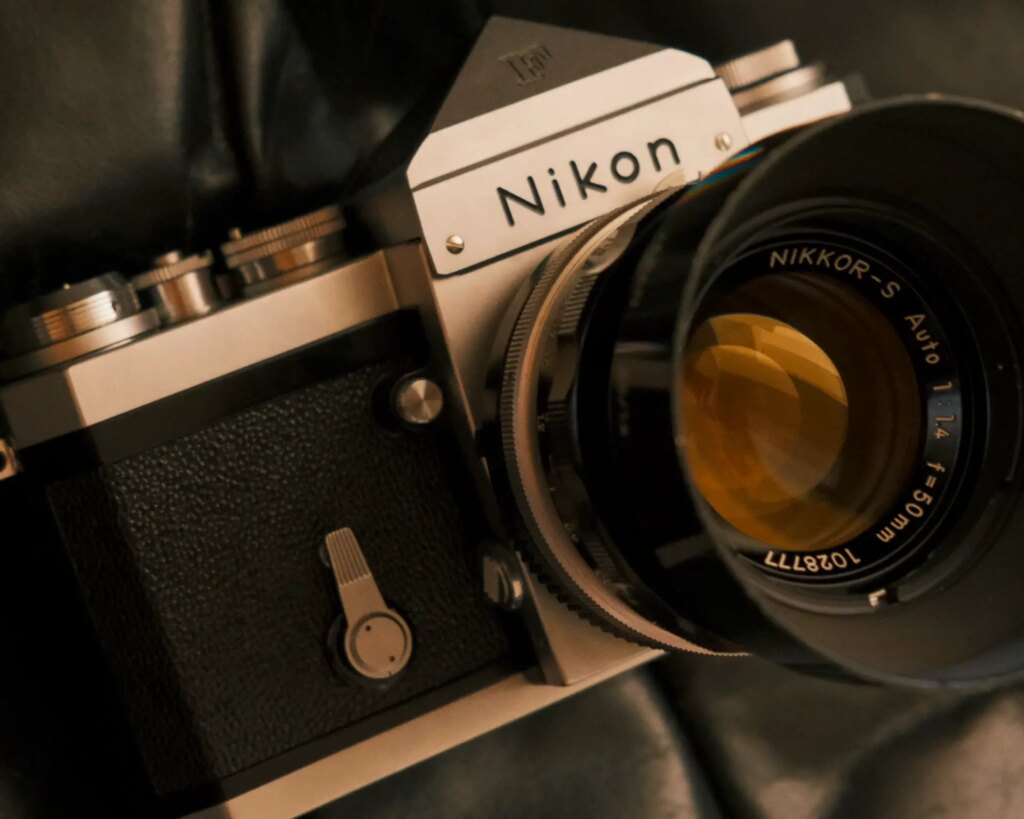
This came with my beautiful Nikon F, and it’s lovely to look at but I don’t like using it. It just feels so slow to focus compared to the f2 that it really is unnecessarily unpleasant. I find it big and heavy and maybe that extra stop over an f2.0 is really important if you are shooting Kodachrome 25 in 1970 but I think I get better shots shooting an f2 lens on this body and I certainly have more fun. Speaking of the Linda Eastman (McCartney) aesthetic – by chance I was watching a docco yesterday and here she is with this lens on her Nikon F so I grabbed a screen shot.
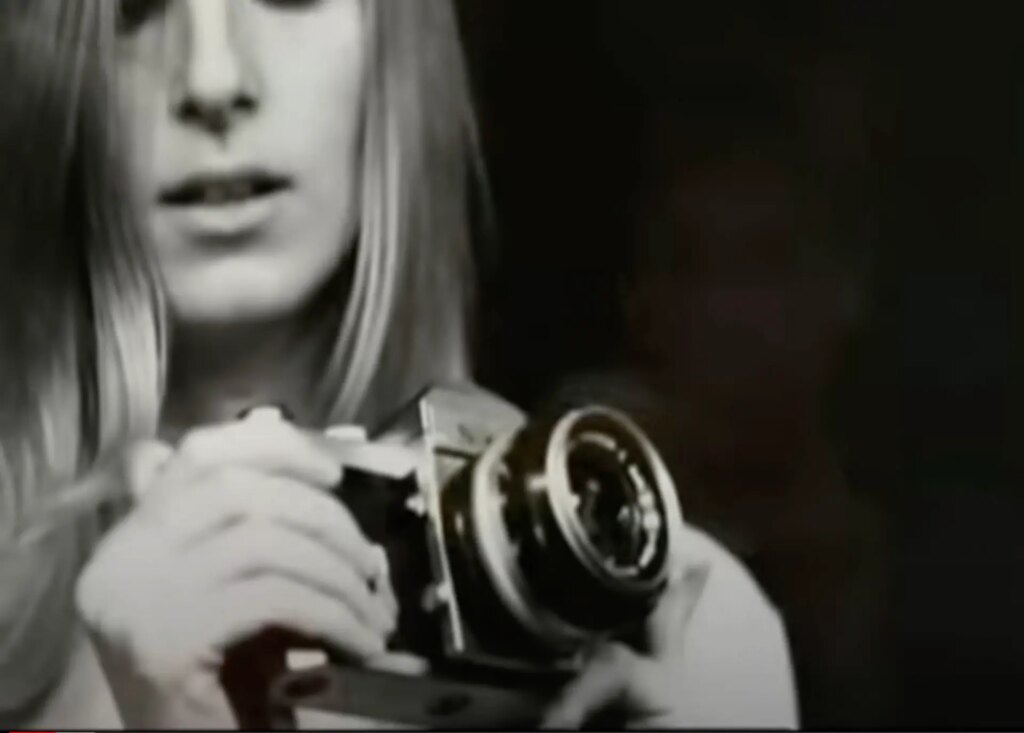
NIKKOR 50mm f/1.4 AI
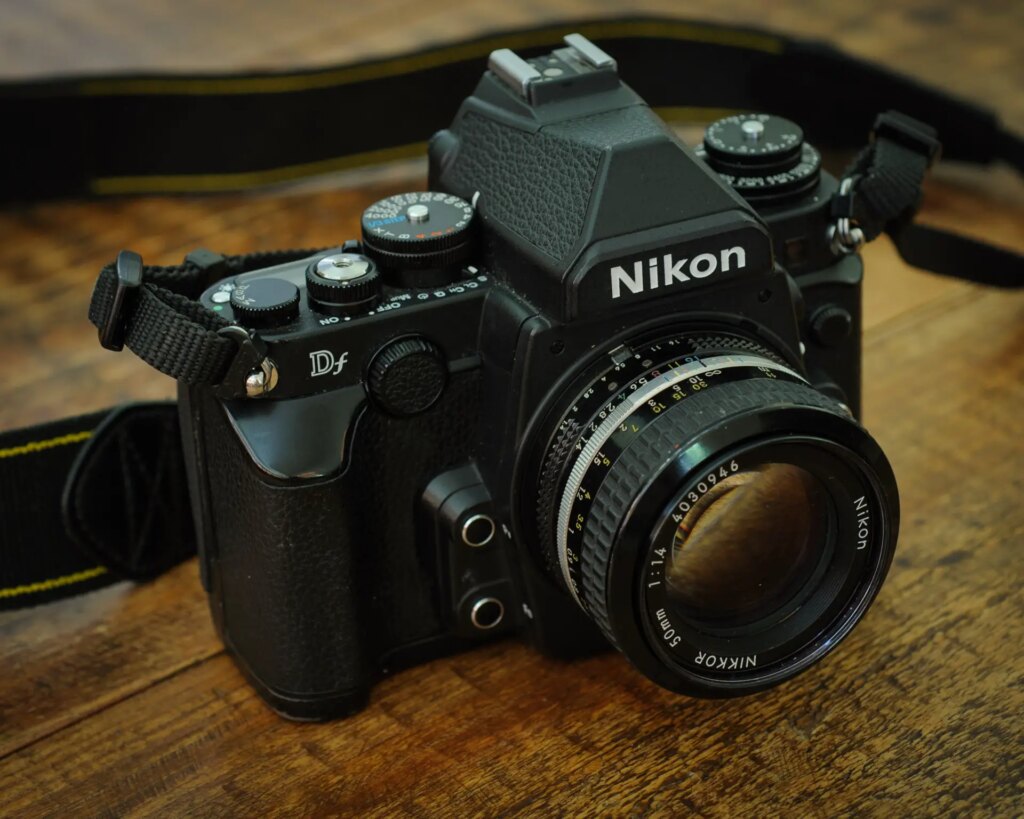
I bought this lens a while ago just because I never had one back in the day and I wanted to see what the 1.4 was like. I guess I might take it out again to shoot people on my Nikon F2 but now that I’ve got the AF version I’d probably pop that on my F4 so at least I’d get things in focus. Everything people say about the buttery smoothness of the focus etc etc is true; they’re all really lovely lenses but I guess this brings home to me that there’s not so much reason to go for the extra stop of speed. I guess it’s a bit like the other MF 1.4 – great to look at, less great when you’re trying to take photos with it.
AF NIKKOR 50mm f/1.4 D
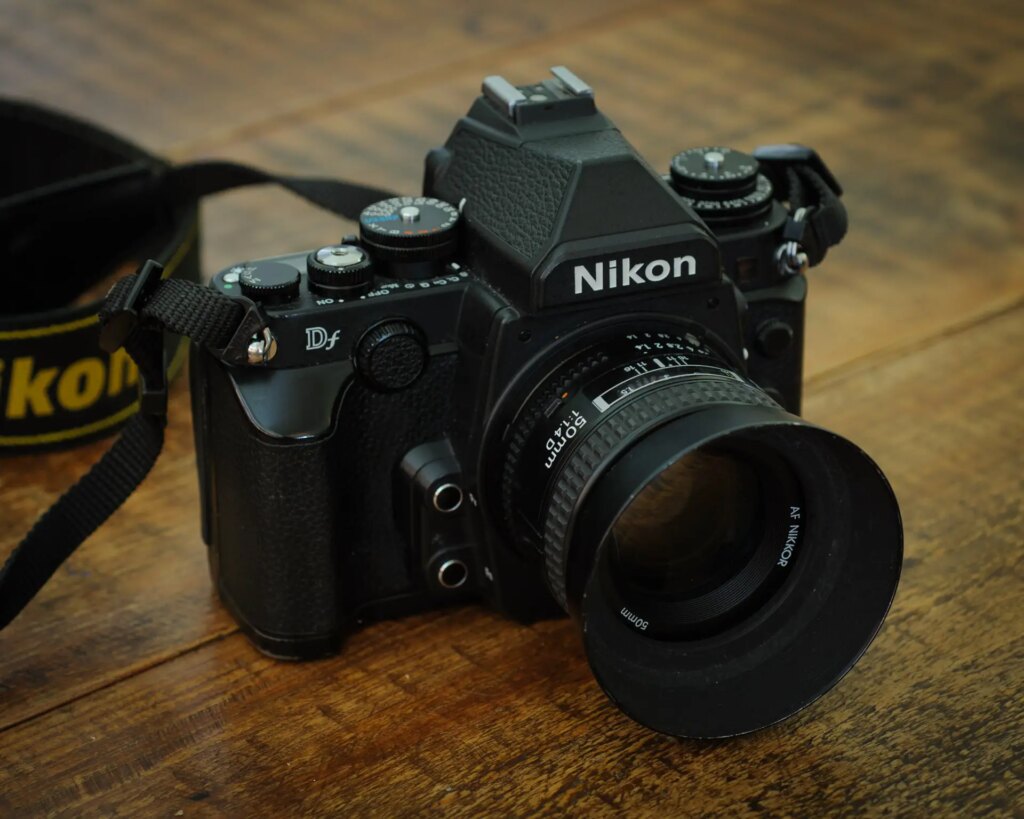
I didn’t have this lens when I wrote the first piece on the Df. Now it is the default lens that sits on the Df unless I have a good reason to change it out. I would use the Df and this lens for family snaps, which is what I did last Christmas. I like stopping it down to f2 and getting a bit of retro 7 bladed aperture action In the bokeh balls or letting it flare up a bit with sunlight. It’s chromatic aberrations may annoy people but you don’t get them in faces so that’s fine for portraits and it just adds character. I think this lens has a lot more character than the f1.8 version. Shall I say again that it’s all personal preferences?
Even though it’s plastic it’s still nice and solid; it has a workhorse feel to it which I like. Yeah I’m really fond of this lens.
AF NIKKOR 50mm f/1.8 D
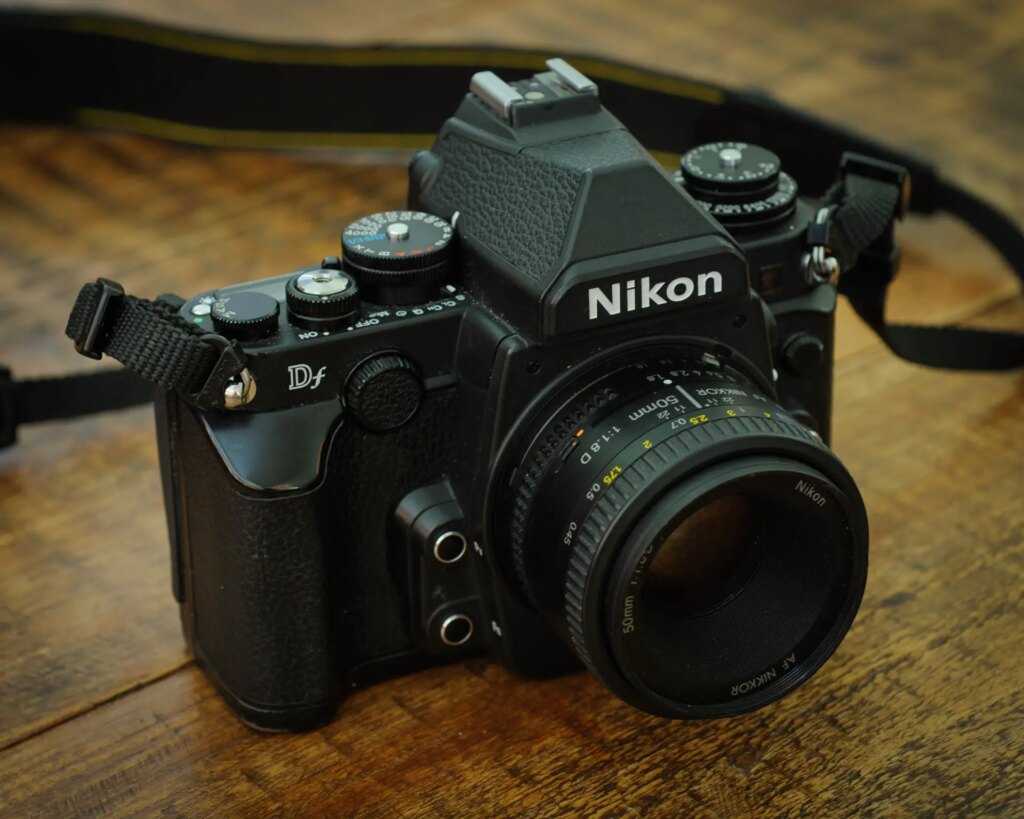
OK it’s uncool and I don’t really want to be seen in public with it. But if I’m at home shooting an atmospheric portrait then I would probably actually use this lens assuming I’m shooting 50 millimetre. The reason is I can shoot it wide open and get round bokeh and it’s sharp enough. If I shot the 1.4 wide open the DOF is a bit narrow (for a dedicated portrait) for my taste and if I stop it down to f2 I get aperture blades in the bokeh balls. Just depends on what aesthetic you’re going for.
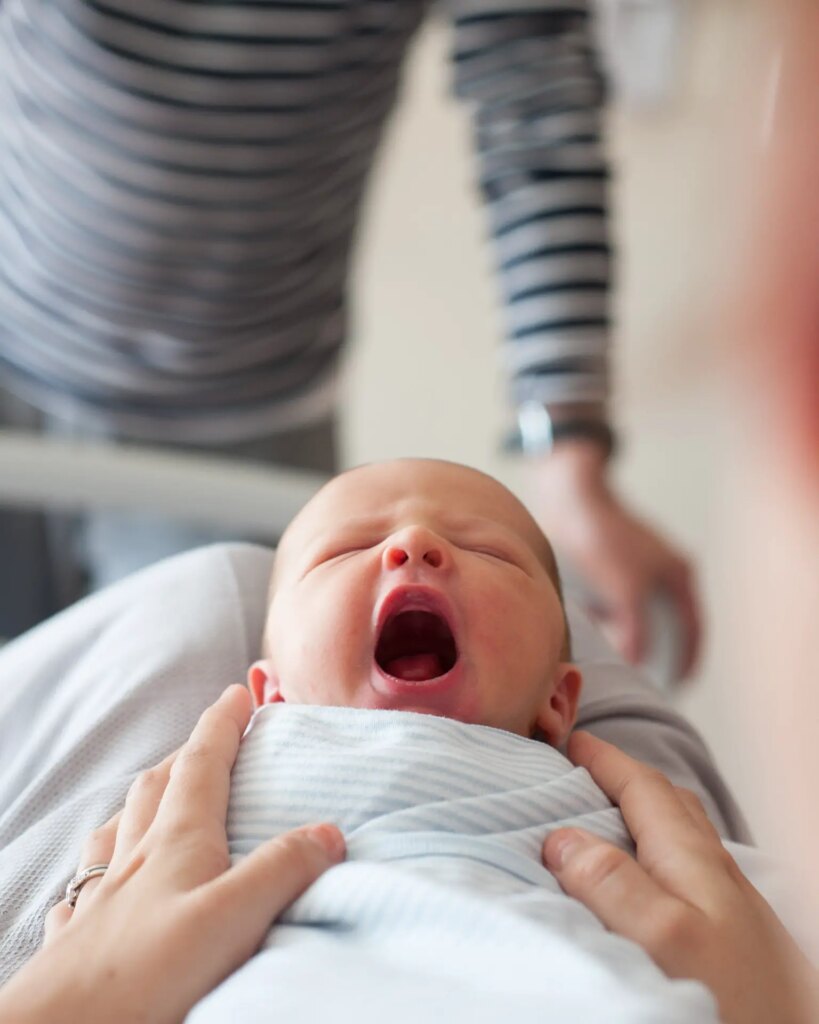
I actually find this lens a bit light on the Df. I think the 1.4 AFD sits really nicely on the Df however. As an aside I have noticed this 1.8 AFD lens being bundled with cheap manual focus film cameras which really has me scratching my head. All this says to me is that it must be the cheapest 50 out there. In the hand it feels very cheap and plasticy but you don’t notice that so much when it’s mounted. It is not pleasant to manually focus it, but it’s such a competent lens in terms of speed, sharpness, or whatever you like that it almost hurts me that I would say anything bad about it.
NIKKOR 50mm f/1.8 AI-s (Pancake)
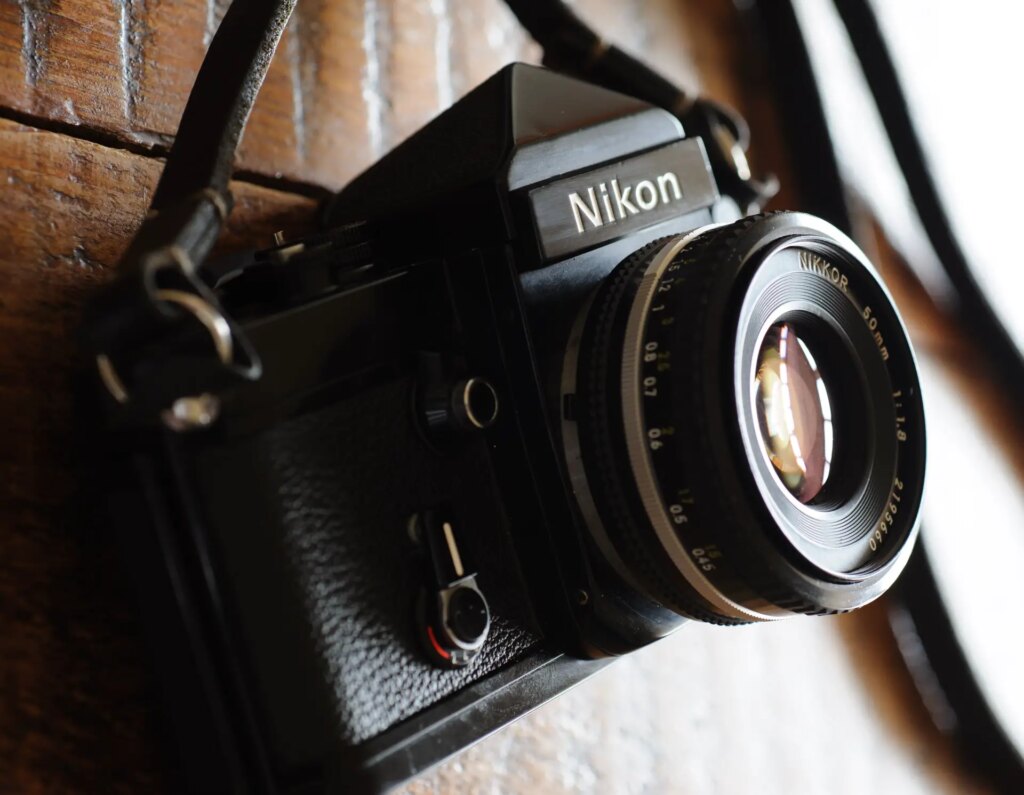
This is my gold standard 50. It’s the one that I shoot on my F2 or it’s the one that I take travelling on my FM2. The image quality is fine and the compactness actually does make a difference when putting the camera in a bag. It’s the fact that it’s a pancake that is the winner and it focuses pretty close too. There’s a lot of stuff out there about how you need to get the Japanese version (that’s this one) that focuses to 45 centimetres and not the version that focusses to 65 centimetres blah blah blah and I don’t know all about that but I would only say why not get the best lens when you’re still paying – what – about 1/5 the price of an R mount ‘Cron for it? Just make sure you don’t get ripped off with someone trying to pass off an E Series or a 65 as a 45 etc. The front element is exposed because it’s a pancake so I always leave a filter on but no cap.
NIKKOR 50mm f/1/8 AI
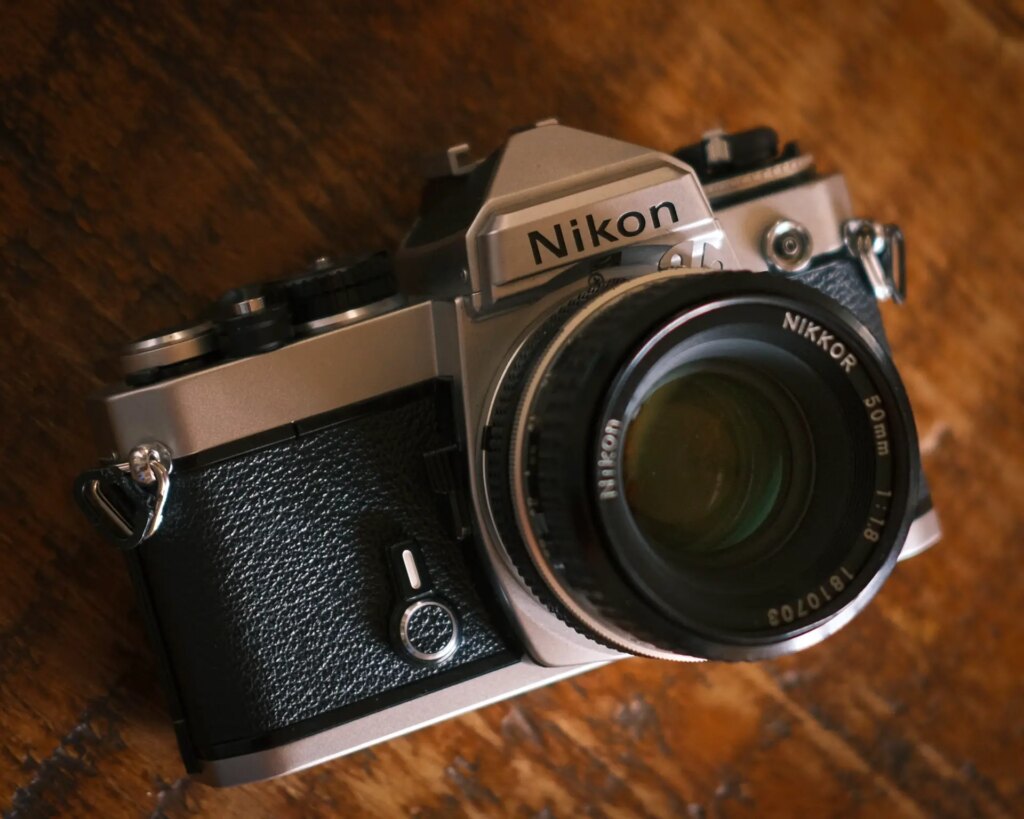
This is a nice lens and if the pancake did not exist then I’d never know and I’d use it and my life would be perfectly fine but why would I use it when I have the others? It came with a camera and that’s why I have it – I’ve never even used it. If I lost my pancake lens for some reason I just use this and not sweat it too much. The condition of mine is perfect and it is just lovely and smooth (because the grease is still good – some of my others could use a service.) Ergonomics are great; like I said I just use the pancake because that fits in a bag better.
NIKKOR 50mm f/2 AI
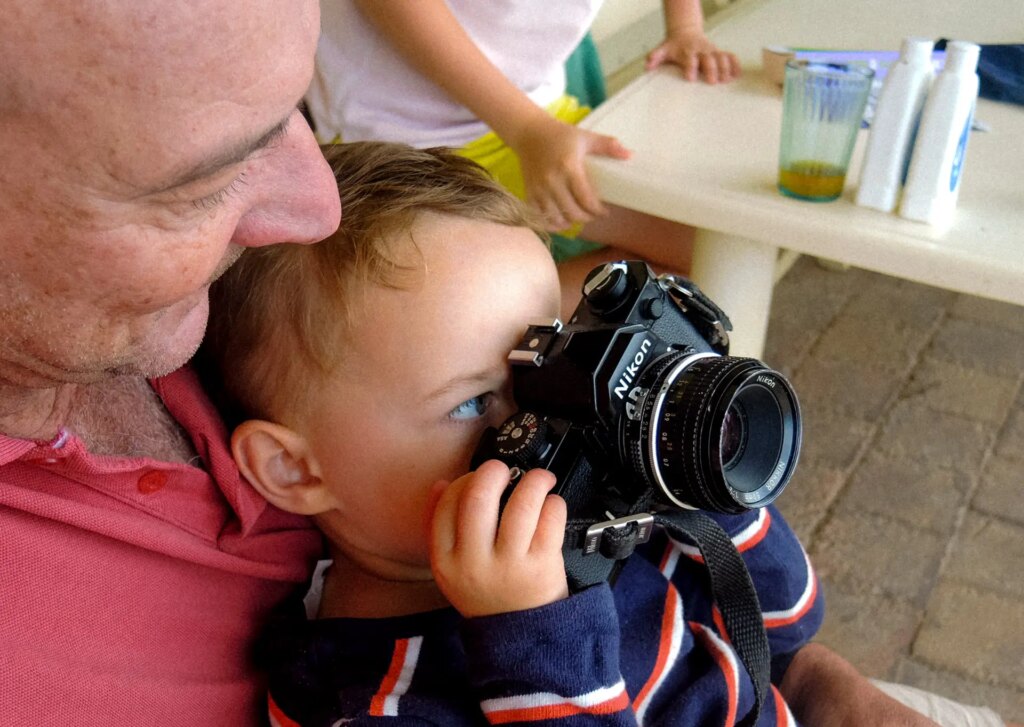
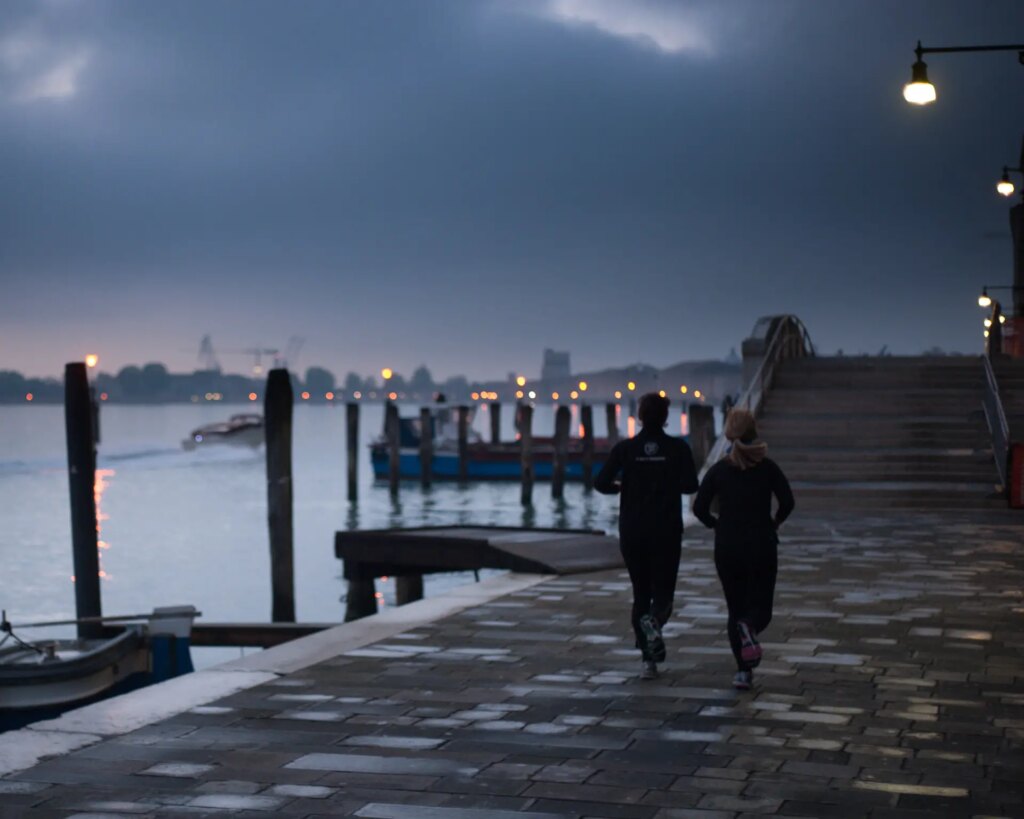
Well, it’s a bit irrational and I have no proof of this but I think this is my favourite rendering lens of all of them. Is there something about the 50mm f2 wide open? If I do a test I can’t objectively see it but then sometimes if I’m going through my catalogue I’ll come across an image and I go “Wow,” check the lens Exif data and it was this one. I don’t think it’s scientific but I’m really fond of it. This lens I actually got for free because when it arrived it was wonky and the seller refunded me the cost and after that I managed to fix it. This copy is a bit of a beater but shoots fine and the front element is well hidden away so I don’t bother with a filter. A sentimental favourite except for… (wait for it)
NIKKOR-H Auto 50mm f/2
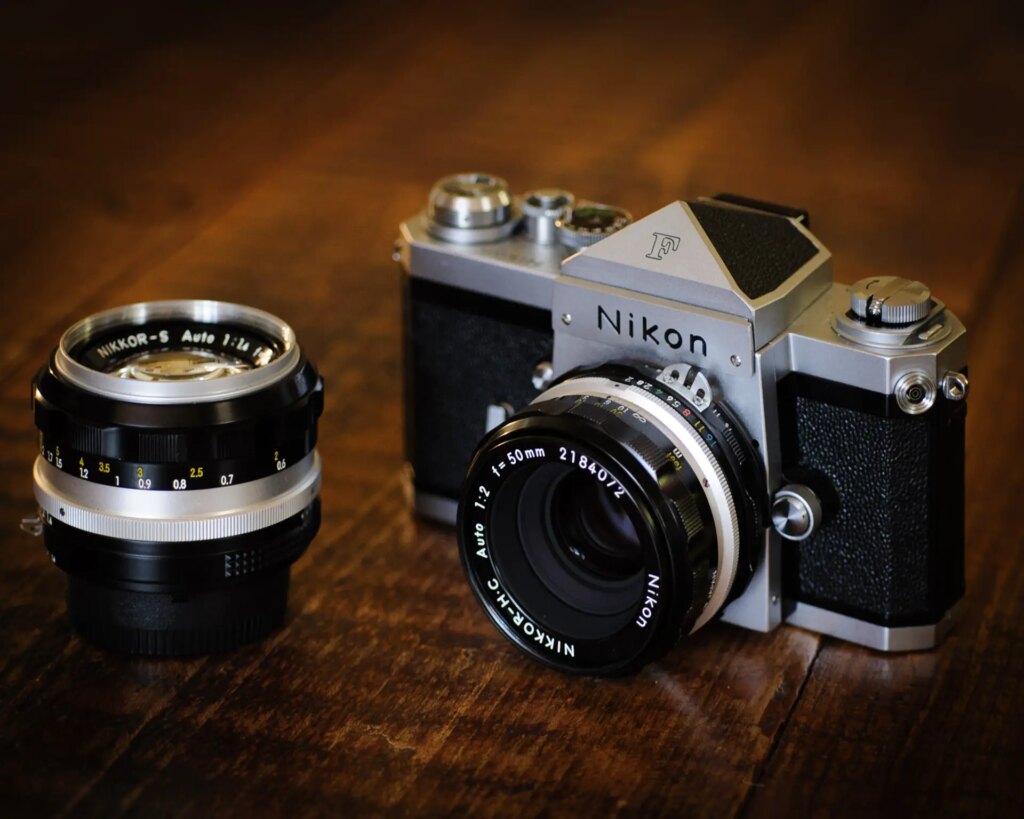
Okay, maybe this one is my fave. I think it’s super cool and this is the lens I use on the Df when I’m out shooting seascapes. I like that the front element is safely tucked away and that means I don’t feel a need to use a filter on it unless I’m shooting in the rain or seaspray. It’s just really nice in the hand and I like the way it looks cool on any camera. Even just a year ago only I paid $AU100 for it.
The tech
So – by the time you get to f2 all these lenses are, for me, optically petty much the same. Like I said though – I felt I needed needed to back up my assertions, so I ran some tests.
Now – before you beat me up and say, “This is not a lens test!” – I know it isn’t. But hear me out. I’m checking to see – for the WAY I SHOOT in the CONDITIONS I’M INTERESTED IN how the lenses perform. And I was surprised at how similar they all were in terms of colour rendering, centre sharpness and bokeh. Hard to get a struck match between them. Here on the site you’re looking at 1920px jpegs that have been further mangled by WordPress so the only point in showing these really is to show what I did. You can’t pixel-peep these. There are 14 shots in my test but I’ll only show three here.
What I DID find interesting is that doing any kind of testing is good, as we (as in me) tend to get confirmation bias with gear when we read reviews. Going through this process made me much less precious about results, and more trusting of deciding whether or not a particular lens suits me. Here – with a Nikkor 50mm on full-frame dig or 135 film I want nice ergonomics and a certain aesthetic. It’s up to me. What I’ve established to my own satisfaction that whichever I choose the optics will be okay, so just use the one I like.
Some people might find the following obsessively nerdy, others might see it as totally slapdash and cavalier. Whatever; I’ll share the process so you know what I did and it might be useful or at least entertaining.
I just made a test scene with a range of strong colours, reds, greens, blues and yellows to check colour rendering, then put some glass and metal in for reflective and transparent objects to look for CA, and put the ruler in at 45 degrees to the camera axis to check the point of focus and to compare centre sharpness. The F1.4 and 1.8 lenses I shot wide open and also f2, and the f2 lenses just at f2.
I shot manual mode and doubled the exposure time going from f1.4 to f2.0. I shot the f1.8 shots at the same speed as f 2.0. I made full size jpeg exports of the raws from LR with no changes. These are shot on the Df as ISO 100. I used natural window light near midday on a cloudless day and completed the test within 15 mins so the light would be constant.
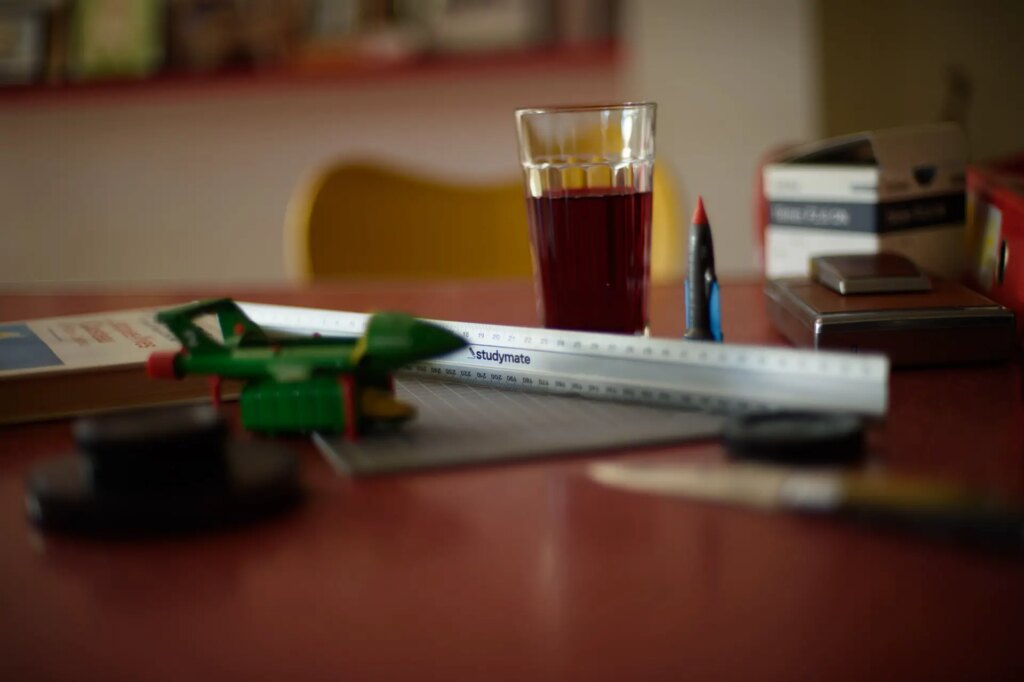
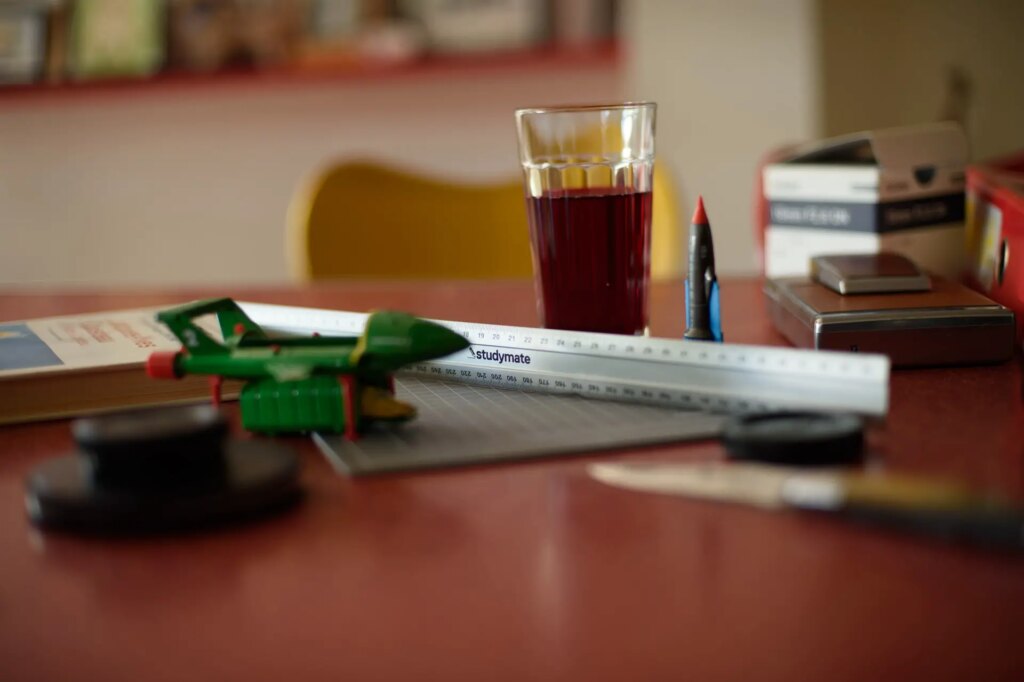
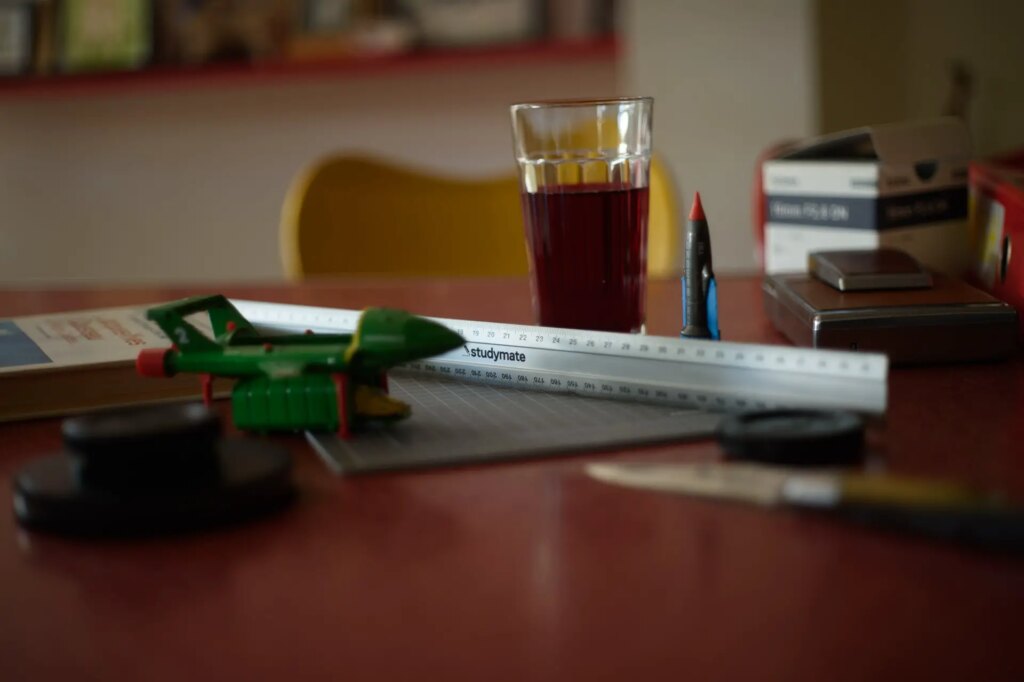
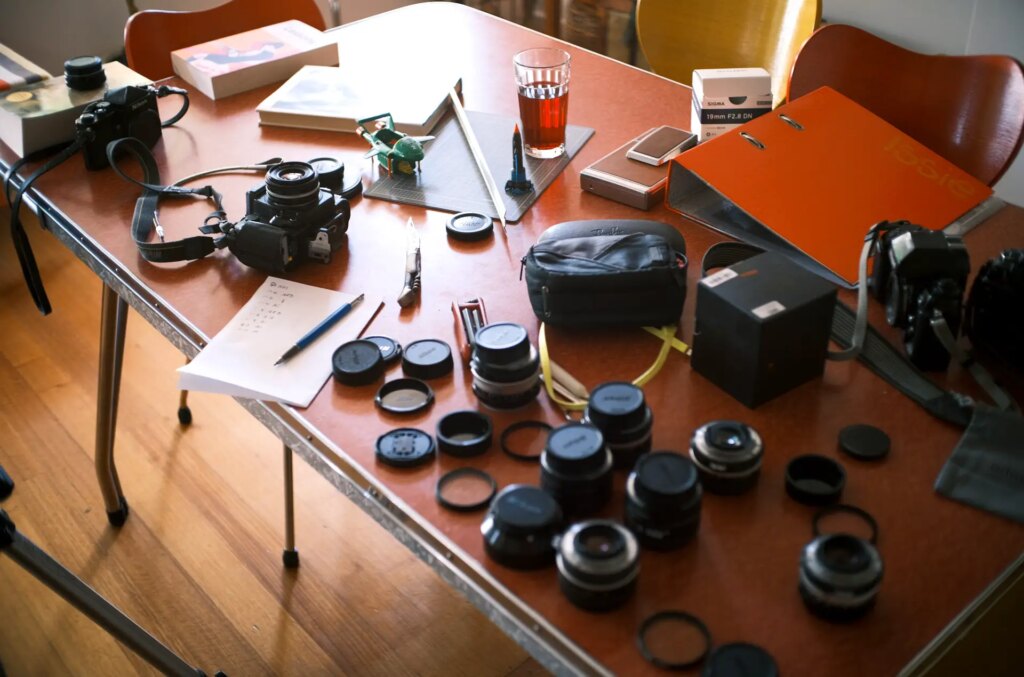
Final Words
The Df was released with a special version of the newer nifty fifty – AF-S NIKKOR 50mm f/1.8G that does not have an aperture ring and had new optics with an aspherical element. That lens has never interested me. Likewise the 50mm f1.2 AI-s which is total overkill and a step backwards from what I need in a lens, so I never looked at getting either of these lenses.
I’m talking Nikkors here and I made the decision to use Nikon when I took a photography course in the late 1980s, but I think my views are not limited to any one brand – correct me if I’m wrong.
You might notice a certain aesthetic in my colours and I guess that was formed when I used to shoot editorial food and lifestyle magazine work in the 1980s and 1990s. It’s a natural light, no flash, transparency film aesthetic because that’s what I did back then. Later when I switched to digital things got easier because you could just crank the ISO to 800 on a D700/D3 and I used AF zooms for everything.
Now that I’m just shooting for myself and my people shots are for fun I’ve only shot 50mm primes on my Nikons. I’ve made my own LR preset for this stuff called “Filmo Davo” that I often use on digital.
Professionally I shoot fine-art, mostly landscapes but I use a whole bunch of other gear and techniques for that. Thanks for reading!
Share this post:
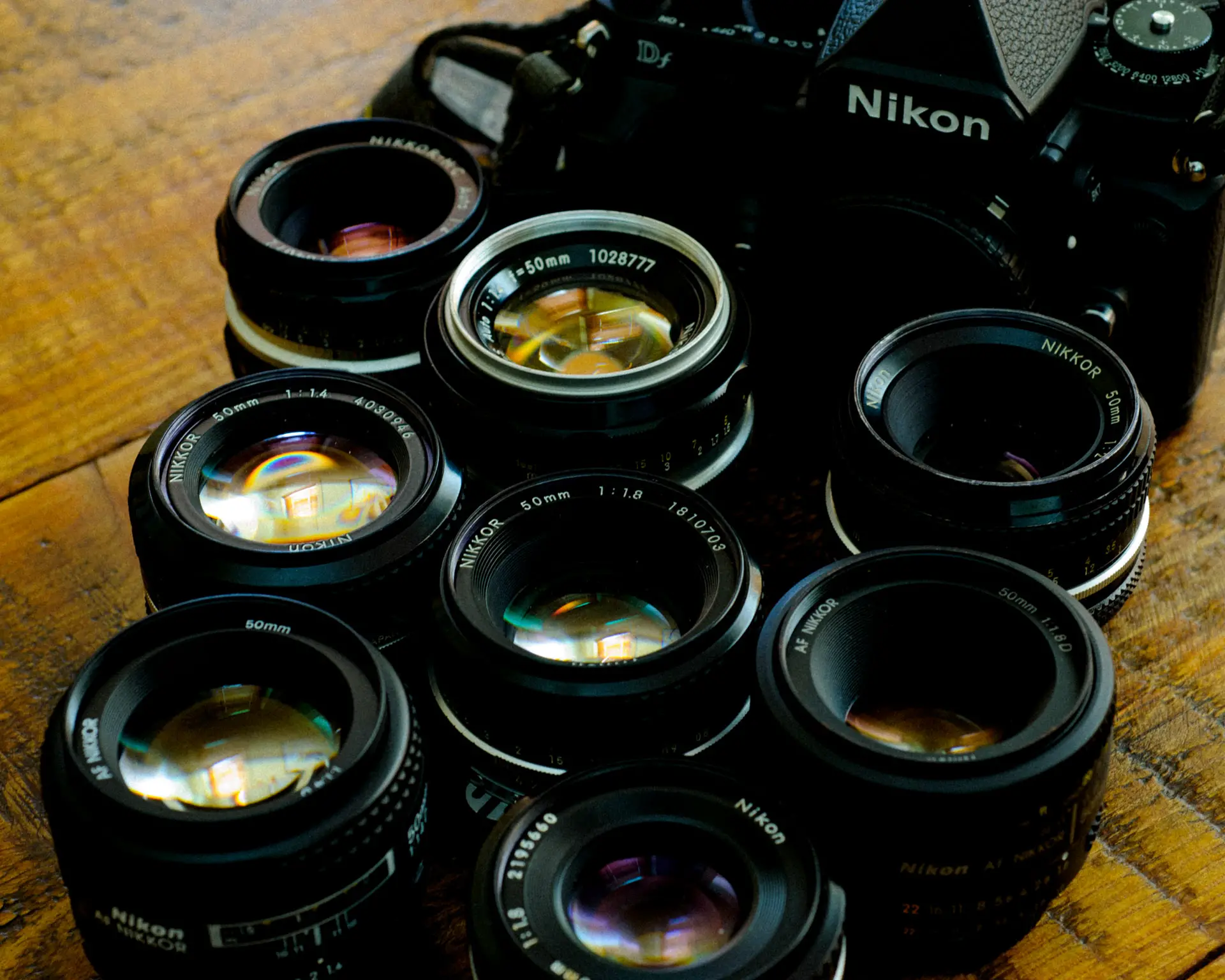








Comments
thorsten on Quick Thoughts on Eight of the Nikkor Nifty Fifties – by David Hume
Comment posted: 17/02/2023
Comment posted: 17/02/2023
Ted Ayre on Quick Thoughts on Eight of the Nikkor Nifty Fifties – by David Hume
Comment posted: 17/02/2023
Comment posted: 17/02/2023
Comment posted: 17/02/2023
Comment posted: 17/02/2023
Comment posted: 17/02/2023
Comment posted: 17/02/2023
Markus Larjomaa on Quick Thoughts on Eight of the Nikkor Nifty Fifties – by David Hume
Comment posted: 17/02/2023
Yes, the Olympus OM series is nice and small, and there's nothing wrong with a Spotmatic or a Minolta SRT... but considering their reliability in the long run (hey, all these cameras are at least about half a century old by now), in my opinion nothing comes close to the rock solid 1960s-70s Nikon quality. Make your pick between F/F2 or Nikkormat FTN/FT2/FT3 and pair it with that cheap and humble but oh! so sweet and sturdy Nikkor-H and that really is all you might ever want for your (film) photography needs.
Unless, like me, you like to mostly shoot with rangefinders... but that's another story ;)
Comment posted: 17/02/2023
Lee on Quick Thoughts on Eight of the Nikkor Nifty Fifties – by David Hume
Comment posted: 17/02/2023
Comment posted: 17/02/2023
Hank on Quick Thoughts on Eight of the Nikkor Nifty Fifties – by David Hume
Comment posted: 17/02/2023
(Incidentally, I have the AF-S 50/1.8G that came with my Df, and it is a wonderful lens, but very modern in its rendering)
One question I am pondering now is focusing screens. I find the Df is mostly easy to manually focus, but not as easy as my F4 (which gets used almost exclusively with AF-D lenses), and certainly not as easy as my FM3a. I wonder if one of those aftermarket, third-party focusing screens would be a worthwhile investment?
Comment posted: 17/02/2023
Bruno on Quick Thoughts on Eight of the Nikkor Nifty Fifties – by David Hume
Comment posted: 17/02/2023
Comment posted: 17/02/2023
Erik Brammer on Quick Thoughts on Eight of the Nikkor Nifty Fifties – by David Hume
Comment posted: 17/02/2023
I was just looking at purchasing a 50 mm lens for the F2 I recently purchased, looking at the Zeiss Planar 50/1.4 or 50/2.0M, and maybe even the Milvus 50. But then, that would quite a bit of money. So I decided to start with an old Nikkor, and based on your article I finally decided to buy a NIKKOR 50mm f/2 AI which seems to be in pretty good condition - and only 99 Euros!
Looking forward to using it.
But the 1.8 Pancake and Nikkor-H also look very nice indeed.
Cheers,
Erik
Comment posted: 17/02/2023
Steve B on Quick Thoughts on Eight of the Nikkor Nifty Fifties – by David Hume
Comment posted: 17/02/2023
Comment posted: 17/02/2023
Gil Aegerter`` on Quick Thoughts on Eight of the Nikkor Nifty Fifties – by David Hume
Comment posted: 17/02/2023
Comment posted: 17/02/2023
Reed George on Quick Thoughts on Eight of the Nikkor Nifty Fifties – by David Hume
Comment posted: 17/02/2023
In any case, I’ll re-read your post more than once, I’m sure. Great to meet another fan of the Df!
Comment posted: 17/02/2023
Kodachromeguy on Quick Thoughts on Eight of the Nikkor Nifty Fifties – by David Hume
Comment posted: 18/02/2023
Comment posted: 18/02/2023
Andrew Inglis on Quick Thoughts on Eight of the Nikkor Nifty Fifties – by David Hume
Comment posted: 18/02/2023
Thanks so much for your article. You expressed so many great thoughts in an understandable way.
I can sometimes feel a little basic w my Nikon FE and AIS 50mm pancake but you got it spot on that the images that simple combo can get are pure magic!
How much money have I spent and hours have I wasted, yet I still return to the FE/50mm package!
David Hume on Quick Thoughts on Eight of the Nikkor Nifty Fifties – by David Hume
Comment posted: 18/02/2023
Adrian Cullen on Quick Thoughts on Eight of the Nikkor Nifty Fifties – by David Hume
Comment posted: 18/02/2023
Comment posted: 18/02/2023
John Earnshaw on Quick Thoughts on Eight of the Nikkor Nifty Fifties – by David Hume
Comment posted: 19/02/2023
Have a look at a website created by Richard Haw, he repairs older Nikkors but before explaining how to repair a lens, provides details of its model history and a review of its performance on digital and film. Ironically, he too uses a Df! Richard has reviews of all the various 50's from f1.2 downwards plus other focal lengths in the Nikon range. His website is well worth a visit.
Comment posted: 19/02/2023
Wouter Willemse on Quick Thoughts on Eight of the Nikkor Nifty Fifties – by David Hume
Comment posted: 20/02/2023
I used to own the less-nifty 50, the Ai-S 50mm f/1.2. It was a really good lens from f/2 on. Comparing it to a 50 f/2 Auto-H on a Nikkormat, though, it didn't really justify its extra weight, size and cost. The sub-f/2 performance has its charm but somehow I never really made it work for me. I like character lenses, but this one is a bit a complicated character I think (more here: https://www.ww-web.nl/seriously-good-with-a-twist/). Since I mainly shoot a FM2, I changed it to the Ai 50mm f/2... to me eyes, it has all the same treats as the older pre-Ai lens.
The f/1.8D, though.... perhaps it is sample variation, but I won't use that for wide-open or near wide-open, and never for bokeh reasons. To my eyes, the ugliest rendering of the bunch and not a great performer below f/4. While I get why it is excluded from your list, the 50mm f/1.8G might well be the sweet spot for AF lenses. Lots of performace for the price.
Comment posted: 20/02/2023
David on Quick Thoughts on Eight of the Nikkor Nifty Fifties – by David Hume
Comment posted: 20/02/2023
Comment posted: 20/02/2023
Chris on Quick Thoughts on Eight of the Nikkor Nifty Fifties – by David Hume
Comment posted: 21/02/2023
Comment posted: 21/02/2023
Neilson on Quick Thoughts on Eight of the Nikkor Nifty Fifties – by David Hume
Comment posted: 21/02/2023
Comment posted: 21/02/2023
Mark on Quick Thoughts on Eight of the Nikkor Nifty Fifties – by David Hume
Comment posted: 23/02/2023
Comment posted: 23/02/2023